How Baseball Players Can Hit Fewer Pop-ups and More Line Drives
In baseball, hitting has been undergoing a revolution in recent years. People are finally starting to realize that hitting the ball on the ground is not the best approach if one wants to have success at the plate.
Hitters are starting to learn that trying to drive the ball in the air can lead to much more success and help them earn chances at the next level. However as more coaches advocate for hitters to drive the ball in the air and avoid hitting ground balls, getting the ball too high in the air – at too high of a launch angle – also results in very little success and can make for a very frustrated hitter. It’s hard to know how to balance all of the information that is how out there on hitting.
In this article, we will discuss how to avoid hitting weak pop-ups that result in outs. With improved swing mechanics, we can turn these pop-ups into line drives and driven fly balls.
Pop up vs. Fly Ball
By definition, a ball hit at a launch angle below 10 degrees is a ground ball, 10-25 degrees is a line drive and anything 25+ is considered a flyball. However, there is a big difference between a ball hit at a 30-degree launch angle and one hit at 60 degrees.
The driven fly balls that hitters are looking for are – depending on the hitter – usually between 25-35 degrees. Anything over 35 degrees, for most hitters, will result in an out. These weakly hit balls that sit in the air long enough to have a fielder camp under and record an out are considered pop-ups.
What Causes a Pop-Up?
Anytime the ball goes in the air, the hitter makes contact with the bottom half of the ball. When we drive the baseball in the air (25-35 degrees) we hit just below the centerline of the ball. When the ball gets skied to the infield or shallow outfield, the hitter hits well below the center of the ball. Basically, the lower on the baseball the bats make contact, the higher the launch angle.
Ground Ball
Line Drive
Pop-Up
Why Hitters Hit The Ball Too High In The Air
Often when you see a hitter pop the ball up, it will be accompanied by a coach yelling, “Don’t uppercut.” In fact, the overwhelming number of players that I work with come in believing that pop-ups are caused by the bat moving up too much through the zone. This causes players to avoid dropping their back shoulder, try and stay on top of the ball and keep the ball out of the air. However, this often times causes the problem to get worse. Let me explain.
Every pitch in baseball moves on a downward angle or plane as it travels toward home plate. Successful hitters keep the bat on the plane of the pitch for a long period of time. The longer they stay on plane with the ball, the greater window they have for making hard contact.
Don’t believe me? Watch the video below of a high-level hitter swinging the bat. The bat drops below the baseball and works on an upward plane back up to the ball.
Example of Good Upward Plane in a Swing
This would be, by most coach’s standards, upper-cutting. Yet, this is what successful hitters do to square up the ball – hitting the center of it – and create line drives and driven flyballs. Most young hitters try and avoid this because they are so ingrained with the idea of staying on top of the ball or trying to create a level swing.
Taking a downward or level path to the ball actually decreases the time that the bat and ball are on the same plane. This increases the chance that a hitter will either hit the top of the ball and create grounders or clip the bottom of the ball and create weak pop-ups.
Example of a Pop-Up
In the video below you’ll that the hitter’s swing plane does not match that of the baseball, and as a result pops it up. His swing plane is too flat.
Fix Your Swing and Hit More Balls Hard By Using A Slight Uppercut
The term uppercut has a very negative connotation in the world of baseball. However, just about every high-level hitter swings with a slight uppercut, and doing so is a vital component of having success at the plate.
As stated earlier, successful hitters will have the bat will drop below the ball to get on plane with the pitch early. From here, they will work the bat on an upward path to meet the ball. Most young hitters are so ingrained to avoid working the bat up or “upper-cutting” that they are actually putting themselves more at risk of hitting weak pop-ups by allowing the bat to work level or down, thus increasing the chance of clipping the bottom of the ball.
Hitting Drills to Improve Your Swing & Drive The Ball
Tee-Behind Bat Path Drill
This drill is great for reinforcing a slightly upward swing path. If you swing down on the ball, you’ll hit the second tee in your follow through. If a proper upward swing path is used, the barrel will just clear the top of the second tee. Anytime you hit the second tee, you know you didn’t have proper swing plane.
Two-Tee Bat Path Drill
This drill will help you understand what a slight uppercut looks like. Place two tees in front of you, with the center of the second baseball (farther from you) aligned with the top of the first ball.
When done right, you should hit both squarely. If you have insufficient upward plane, the second ball will be popped up and mishit as you swing beneath it on too flat of a swing plane.
Final Thoughts on Swing Plane
With any type of bat path, it is possible for a hitter to hit any part of the baseball. However, most of the time that balls get popped up, it is because the bat is not moving up enough through the hitting zone. Even though most coaches advise against upper-cutting, moving the bat on a more upward path through the hitting zone usually leads to more line drives and far fewer weak pop-ups.
Jim Sheppard
Latest posts by Jim Sheppard (see all)
- How Baseball Players Can Hit Fewer Pop-ups and More Line Drives - July 24, 2018

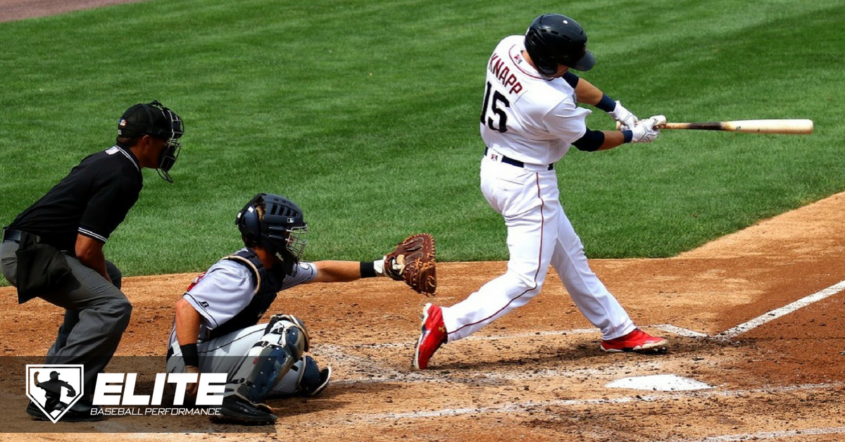




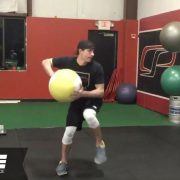
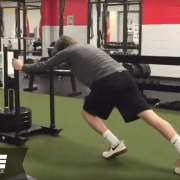
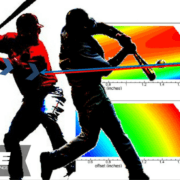
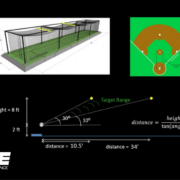



I’m curious as to how timing effects this. My son has a slightly uppercut swing, but I think his timing is off, resulting in pop-ups. Meaning he’s getting on plane with the ball, but too late. Would that result in pop-ups? Does that make sense?
Batter hits a fly ball to right and the right fielder is playing in. The RF fields the ball cleanly on a bounce and has plenty of time to throw the runner out at first. However, he makes a bad throw and the runner is safe. Is it a hit or an error on the RF?
Base hit. Once the ball leaves the infield and hits the ground, it’s a hit. However, if the runner advances on the errant throw, it’s a base hit and error on the right fielder.
The best shots in the MLB aren’t just hitting the ball. It’s about power, precision, and timing. There are many reasons why a player can become a good hitter. It could be because of their stance, or it could be that they have more power than other players.
This is a nice post to read. Good One!
i like this game thankyou